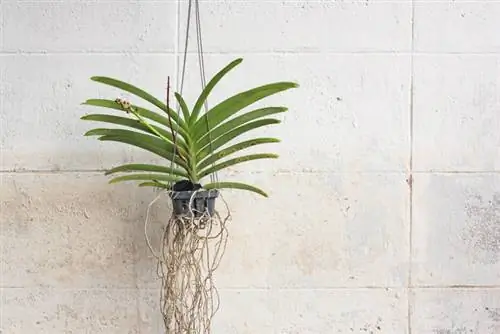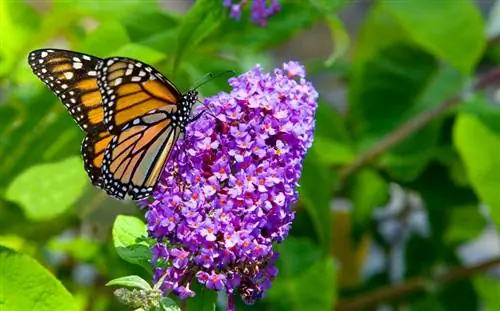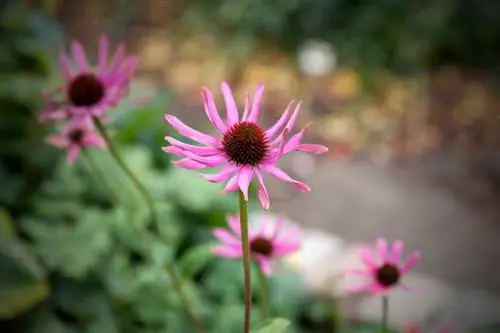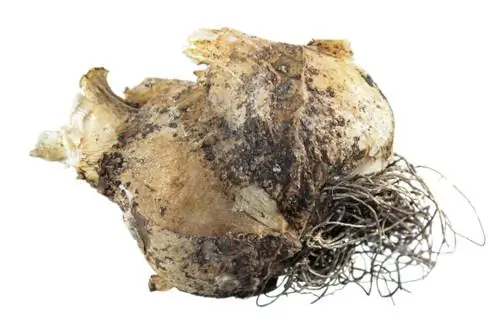- Author admin [email protected].
- Public 2023-12-16 16:46.
- Last modified 2025-01-23 11:20.
At the end of the flowering period, orchids look quite inconspicuous with empty flower stalks and green leaves. Unfortunately, the exotic flowers end up in the compost much too quickly. With loving care, orchids can be motivated to have another flower festival. You can find out here how to properly water, fertilize and cut the plants after flowering.
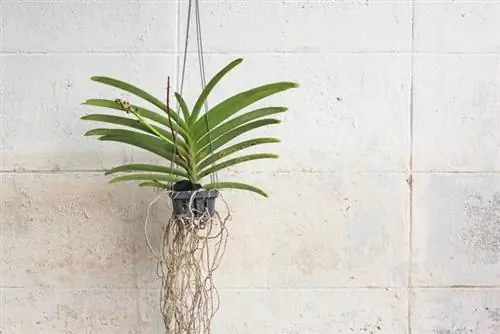
How to care for orchids after flowering?
After an orchid has finished blooming, it needs rest and care to bloom again. To do this, they should be moved to a cooler, bright location, watered more sparingly, sprayed regularly and not fertilized until budding begins.
This care program initiates the next bloom
When the flowering period comes to an end, a more or less long rest phase begins. Depending on the type of orchid, this lasts from a few days to a few months. So that the tired orchid can regenerate quickly, this care gives it new strength:
- Move non-flowering orchids to a bright location that is 3 to 5 degrees cooler
- Watering more sparingly or diving less often
- Spray with soft water every 1 to 2 days
- Do not fertilize until fresh shoots begin
Phalaenopsis, Dendrobium and Cattleya in particular react positively to a slight drop in temperature after flowering. During this time, keep an eye on the flower stems and leaves. As long as the parts of the plant are still beautifully green and plump, they must not be cut off. The scissors are only used when a shoot or the foliage has completely died.
Tip
After flowering, the ideal time window opens to repot an orchid. If the transparent culture pot is too crowded so that the roots grow over the edge, a larger container with fresh substrate makes sense. On this occasion, dried aerial roots and dead bulbs can be cut off without worry.

